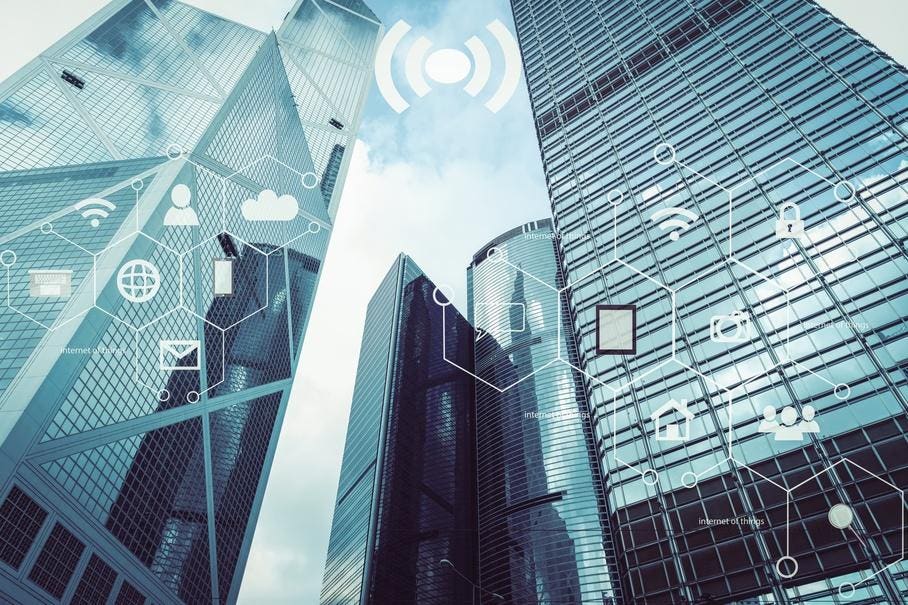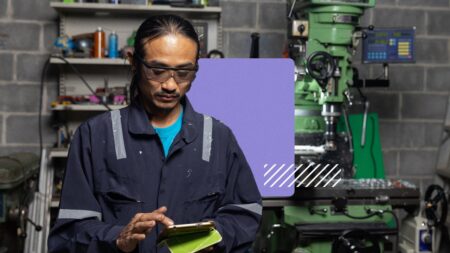Stefan Schwab is CEO of Enlighted. Enlighted is part of Building Robotics, Inc., a Siemens company.
Generative AI (GenAI) services like ChatGPT and Google Gemini vividly illustrate how artificial intelligence (AI) technology can derive value from volumes of data that are too vast for humans to interpret.
But beyond text, code, images and video, the same data-driven machine learning (ML) principles that power GenAI, when applied to building IoT and occupancy data, can help organizations optimize well-being and productivity in any workplace, from traditional office settings to hospital emergency rooms to the supply chains that fuel the manufacturing floor.
New Data Insights
The large language models (LLMs) that underlie GenAI services sift through trillions of data points to discover new insights and generate innovative recommendations. Most organizations already have an analogous amount of building data generated by IoT sensors currently embedded in lighting controls, thermostats and desk sensors, constantly gathering information about how space is used. The research firm Memoori forecasts that the number of IoT devices used in commercial smart buildings will grow at a 13.7% CAGR through 2028, reaching an estimated 3.25 billion devices.
However, this rich building information has typically been used only to detect and respond to mechanical problems, not to improve the productivity of the work that takes place inside. AI and ML analytic models fed with IoT data can empower facilities managers to use space more productively and create more pleasant, fruitful experiences for the people in it.
Real-World AI Applications In The Built Environment
There is already an enormous opportunity to tap into smart building data; by some estimates, up to 90% of it is never used. This can change when AI and machine learning are applied to applications such as real-time location systems (RTLS), which use sensor data to locate people and equipment and monitor how they move through the workplace. ML-powered RTLS can combine sensor data with advanced analytics to enhance a multitude of processes across industries, elevating productivity to new heights.
Here are four potential applications.
Healthcare
In the critical workplace environment of healthcare, where fast access to resources is often a matter of life and death, real-time data from sensors and Bluetooth-equipped tracking tags can optimize the allocation of rooms and equipment. Implementing real-time tracking systems for both equipment and staff can significantly improve patient care, minimize wait times and enhance hospital efficiency and patient experience.
Supply Chain
In warehousing, global logistics and supply chain applications, a similar technology can be used to track the location of equipment used to operate assembly lines and perform a multitude of other functions. One hour of downtime in automotive production facilities costs more than $1.3 million, for example, underscoring the benefit of utilizing smart building data and AI to manage inventory levels dynamically, predict demand surges and optimize routes.
Workplace Comfort
Smart building data and AI technologies can be used to create a more comfortable work environment that boosts employee productivity and retention. These resources can also be tapped to meet employees’ individual preferences, bridging the gap between remote and in-office work. For example, intelligent climate control systems learn from occupants’ preferences, creating a more adaptable, comfortable and productive working environment that is superior to inefficient traditional static energy systems.
Facilities Efficiency
Intelligent building management systems in public spaces enhance cleaning efficiency through sensor data, analytics and ML. Algorithms applied to an intelligent sensor network can offer insight into usage patterns, allowing facilities managers to better plan cleaning schedules for high-traffic areas such as restrooms. This not only leads to a better customer experience, but it also avoids wasting resources—either cleaning material or workers’ time.
Creating More Productive Workplaces
When getting started with AI- and ML-enhanced building IoT solutions, best practices help to formulate an optimal workplace productivity plan.
• Strategic implementation: Clearly define use cases and goals, such as enhancing resource productivity or improving space efficiency, to ensure that AI, ML and IoT investments align with business priorities.
• Data security: Maintain strong compliance with data security and privacy regulations to protect sensitive building data from data breach or loss, or employee leakage.
• Collaborative approach: Build cross-departmental partnerships between the Facilities team and other teams, including Purchasing, Operations and Human Resources, to fully inform comprehensive AI- and ML-based IoT solutions.
• Training: Invest in training programs to help the business understand and use the insights the enhanced IoT solutions generate.
• Scalable innovation: Choose AI- and ML-based IoT solutions that can grow with your business, evaluate their impact and adjust as needed.
Future-Proofing Investments In AI And ML
Future-proofing the smart building goes beyond deploying IoT-based intelligent building management technology; it requires preparing the workforce to use these tools to drive innovation. This can be accomplished by:
• Adopting a continuous learning approach: AI and ML systems improve over time as the volume of production data grows and algorithms are enhanced. Encouraging a culture of innovation, where employee feedback is actively sought, can help refine these systems.
• Exploring emerging technologies: Staying abreast of developments in AI, ML and IoT technologies can further enhance workplace efficiency and employee productivity.
Making Work More Productive
Applying AI and machine learning to the riches of smart building data is already revolutionizing productivity. Through AI- and ML-driven data analytics, IoT devices and sensor insights, businesses can create more adaptive environments that streamline operations and enhance the productivity of people and spaces.
As organizations adopt these technologies, focusing on innovation, security, collaboration, education and scalability is vital. Proactively planning for change protects existing investments and fuels the ongoing productivity revolution.
Forbes Business Council is the foremost growth and networking organization for business owners and leaders. Do I qualify?
Read the full article here
















